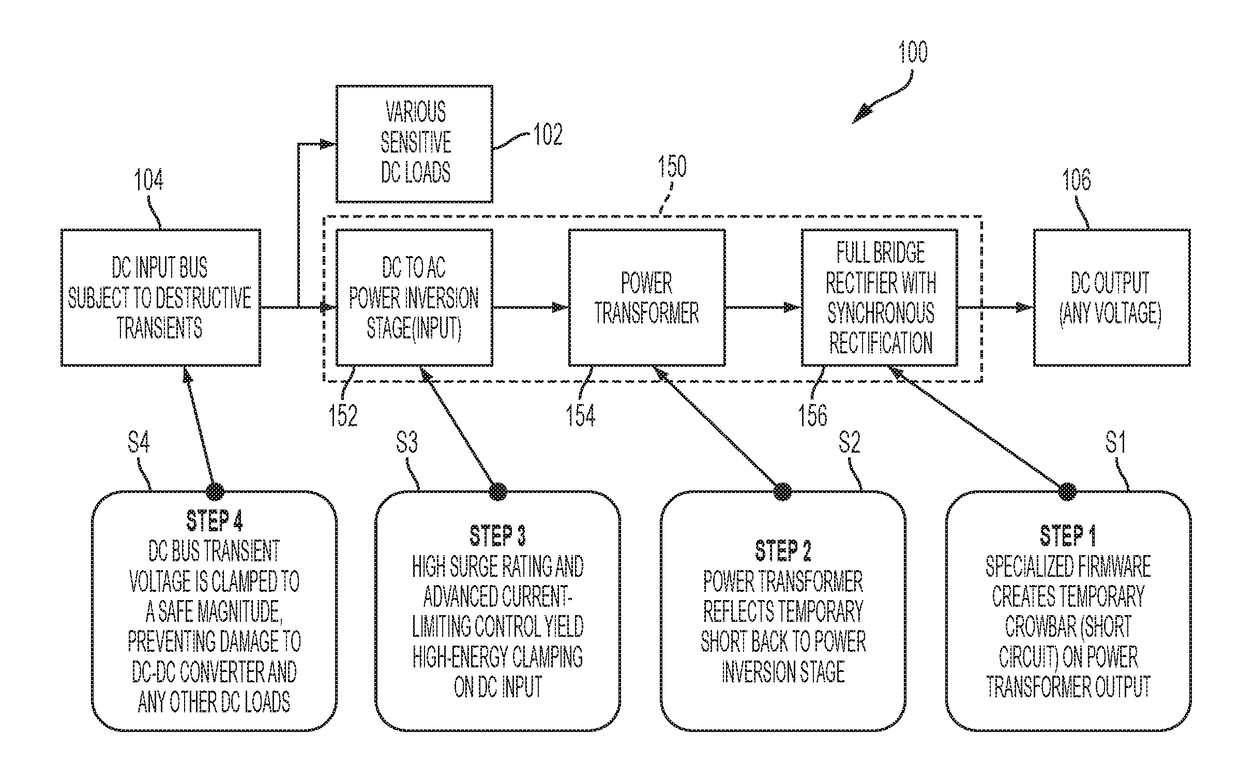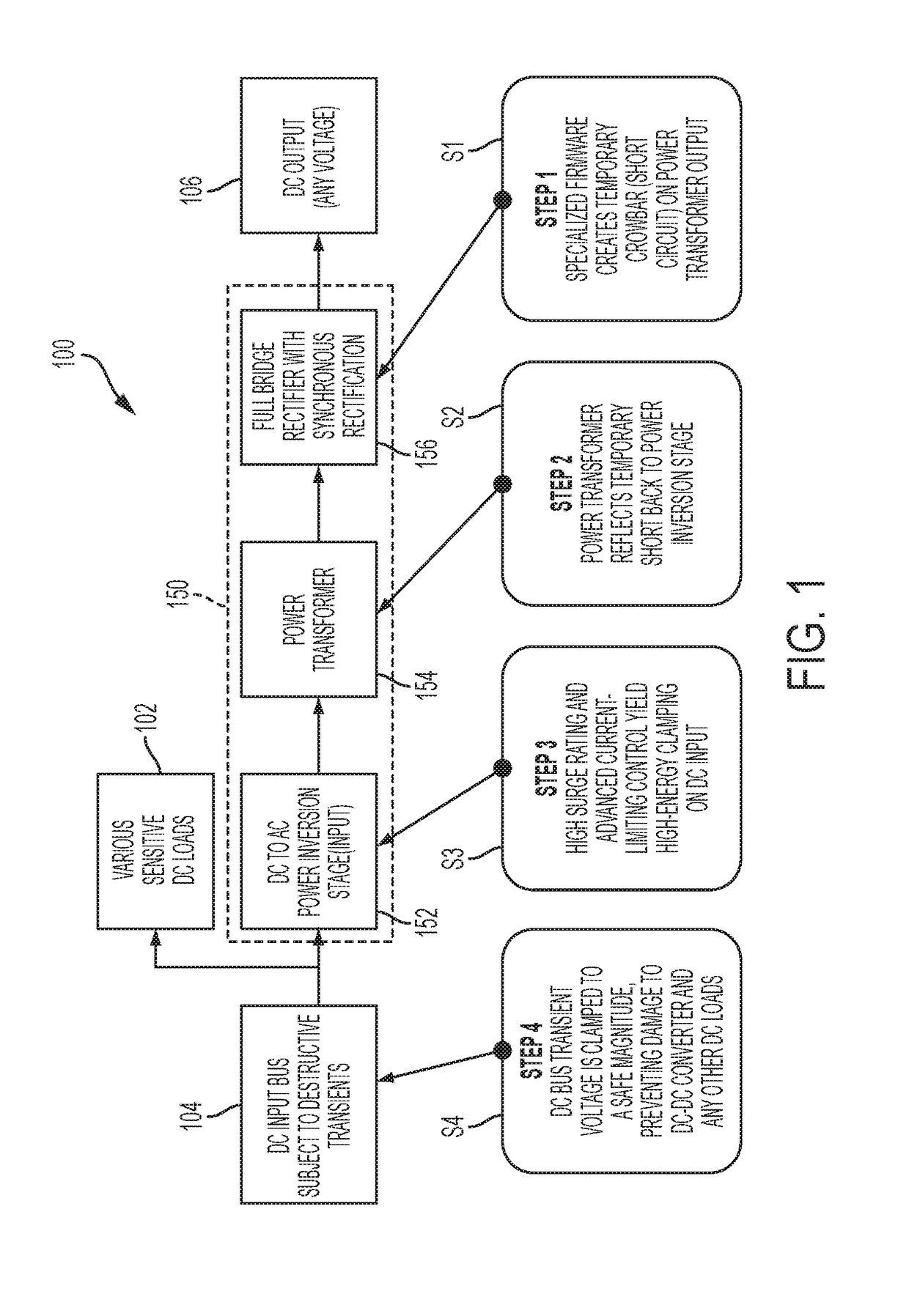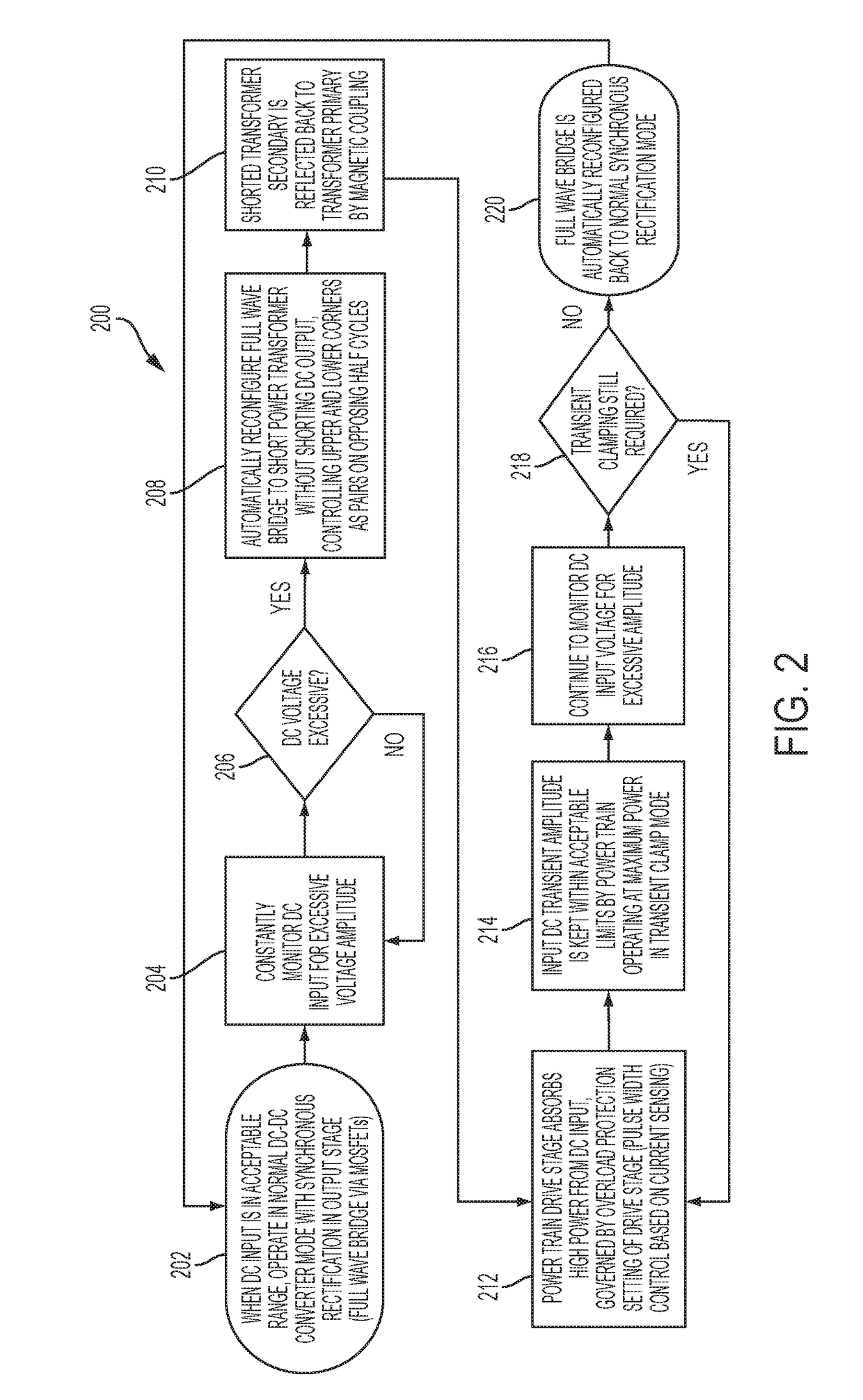Dc-dc converter input voltage high-energy transient clamping topology
a converter and input voltage technology, applied in the direction of power electronics conversion efficiency emergency protective circuit arrangement, etc., can solve the problems of high energy consumption of input voltage transients, damage still often occurring, and damage to electrical components and systems, etc., to achieve high reliability, low cost, and tight performance specifications
- Summary
- Abstract
- Description
- Claims
- Application Information
AI Technical Summary
Benefits of technology
Problems solved by technology
Method used
Image
Examples
Embodiment Construction
[0014]The subject technology overcomes many of the prior art problems associated with transients in electrical systems. The advantages, and other features of the systems and methods disclosed herein, will become more readily apparent to those having ordinary skill in the art from the following detailed description of certain preferred embodiments taken in conjunction with the drawings which set forth representative embodiments of the present invention and wherein like reference numerals identify similar structural elements. It is understood that references to the figures such as up, down, upward, downward, left, and right are with respect to the figures and not meant in a limiting sense.
[0015]Referring now to FIG. 1, a block diagram representation of a clamping topology 100 in accordance with the subject disclosure is shown. The topology 100 protects various sensitive DC loads 102 being powered by a DC input bus 104, which may be subject to destructive transients. The topology 100 p...
PUM
 Login to View More
Login to View More Abstract
Description
Claims
Application Information
 Login to View More
Login to View More - R&D
- Intellectual Property
- Life Sciences
- Materials
- Tech Scout
- Unparalleled Data Quality
- Higher Quality Content
- 60% Fewer Hallucinations
Browse by: Latest US Patents, China's latest patents, Technical Efficacy Thesaurus, Application Domain, Technology Topic, Popular Technical Reports.
© 2025 PatSnap. All rights reserved.Legal|Privacy policy|Modern Slavery Act Transparency Statement|Sitemap|About US| Contact US: help@patsnap.com



